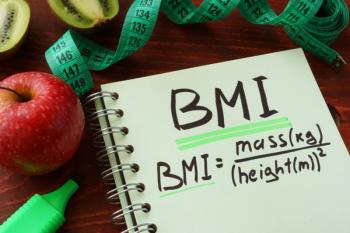
Americans Often Pay 3 Times More for Medicare Drugs Up for Negotiation Than Comparable Countries
Based on a comparison of prices for drugs up for Medicare price negotiations, there is a long way to go to reach the prices of 7 comparable countries.
Americans pay approximately 3 to 7 times more for brand-name prescription medications than residents of other comparable countries.
Price negotiations for the 10 drugs selected using the criteria for negotiable drugs set forth by the IRA will begin in February this year and the price changes will take effect in 2026. The
From June 1, 2022, to May 31, 2023, the 10 drugs chosen for price negotiations account for $50.5 billion, or approximately one-fifth of total Part D–covered prescription costs. CMS will select up to 15 additional drugs for negotiation for 2027, up to 15 more for 2028 for both Part B and Part D, and up to 20 more for each subsequent year.
“Understanding drug pricing and policy in peer countries—where drug use is similar but costs are lower—is important for benchmarking drug affordability going into the negotiation process,” noted the authors of The Commonwealth Fund’s report.
The report compared prices in the US for the 10 drugs being negotiated with prices in Australia, Canada, France, Germany, Japan, the United Kingdom, and Switzerland. The analysis included data from IQVIA and information from the Medicare Payment Advisory Commission.
Prices for the 10 Selected Drugs
Even taking into account rebates, US net prices are still significantly higher than other countries. Rivaroxaban (Xarelto), which is an anticoagulant, was the only drug that was not the most expensive of all countries. After taking into account rebates, the estimate net price per dosage unit was $7.87 in the US compared with $12.00 in Japan. However, before rebates, the price in the US would be $15.44 per dosage unit.
Apixaban (Eliquis), another anticoagulant, has an estimated $3.95 in rebates per dosage unit, which brings the US net price per unit to $4.11, which is still far more than the second-highest country, Switzerland, with $2.56 per unit.
Sacubitril/valsartan (Entresto), which treats chronic heart failure, only has $2.25 per unit in estimated rebates, bringing the price per unit to $9.57, which is more than double Switzerland’s second-highest price of $4.51. Japan has the lowest list price of $1.25.
There are 4 diabetes treatments on the list, all of which receive estimated rebates of 50% off the list price in the US. The price for sitagliptin (Januvia), is $9.17 after rebates; however, the US price is still nearly 3 times the list price in the country with the second-highest price, Canada, where sitagliptin is $3.33 per unit. In Germany, the price per unit is less than $1. Empagliflozin (Jardiance) is $10.15 per unit after rebates, compared with $3.17 per unit in Switzerland, which is the second-most expensive. Dapagliflozin (Farxiga) has a net price of $11.05 in the US after rebates, which is almost 4 times higher than the second-highest list price of $3.05 in Switzerland. Last among the diabetes treatments, insulin aspart (Fiasp, Fiasp FlexTouch, Fiasp PenFill, NovoLog, NovoLog FlexPen, and NovoLog PenFill) is $19.86 per unit after rebates, which is more than 3 times higher than Switzerland’s second-highest list price of $5.36.
Ibrutinib (Imbruvica), a targeted cancer drug, receives the smallest estimated rebate of all 10 drugs at just 9%, which brings the list price in the US down from $479.71 to $436.54 per unit. In Switzerland, which has the second-highest list price, ibrutinib is $325.91 per unit. Australia has the lowest list price at $89.68.
Etanercept, a disease-modifying antirheumatic drug (DMARD), despite more than $490 in estimated rebates still costs an estimated $1202.17 per unit in the US. Switzerland has the second-highest list price at $455.92. In Japan, the list price is only $133.62. There are 2 etanercept biosimilars approved in the US; however, neither will come to market until 2029 due to litigation.
Ustekinumab, another DMARD, is expensive across the board, with prices easily topping $2000 per unit in all the countries studied. While the estimated US rebate is nearly $5300, the estimated net price in the US is still very expensive at $12,946.15 per unit. Germany has the second-highest list price at $9223.14 per unit.
The first
The authors of the report note that the list prices and net prices may not capture what patients and insurers actually pay across various health systems. In the US, uninsured patients may not have access to the rebates negotiated by payers. In other countries, patients may pay nothing or a limited co-pay for their prescriptions.
“List prices are an important starting point for discount negotiations and are the only datapoints that can be systematically compared between countries,” they wrote. “In the U.S. specifically, list prices can affect patient out-of-pocket costs for drugs, which are often calculated as a percentage of list price rather than net prices; increases in list prices in the U.S. have been found to correlate with increases in patient out-of-pocket costs.”
Newsletter
Stay ahead of policy, cost, and value—subscribe to AJMC for expert insights at the intersection of clinical care and health economics.















































